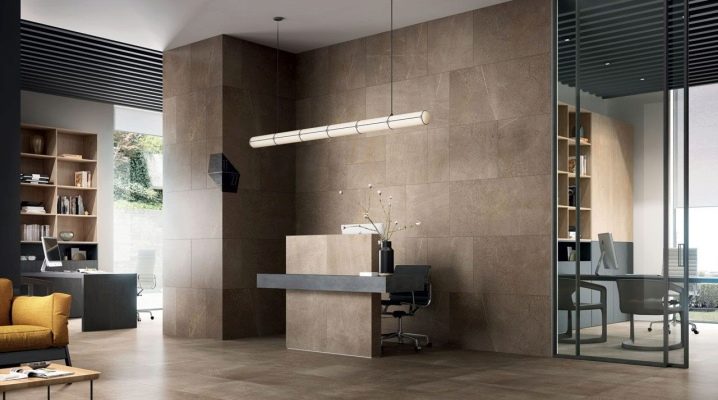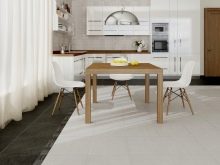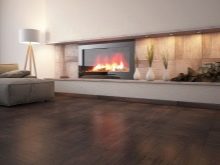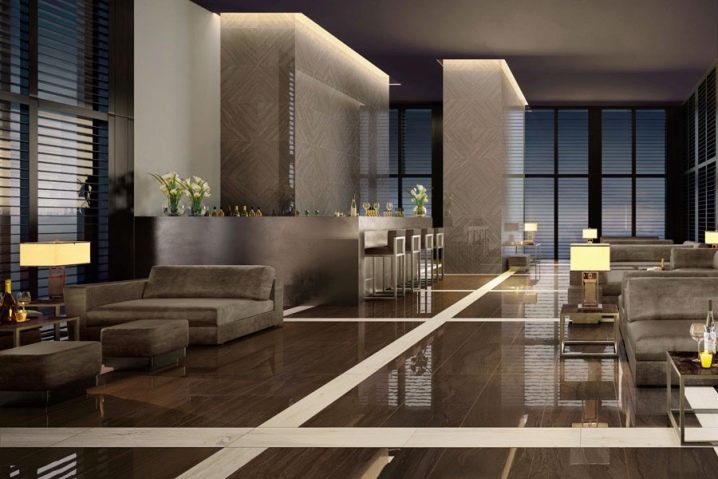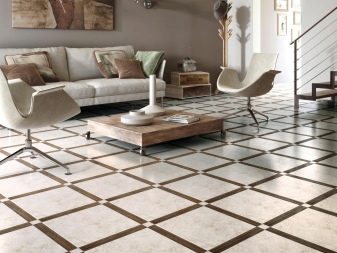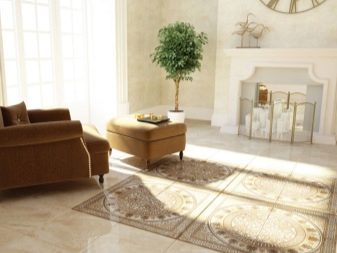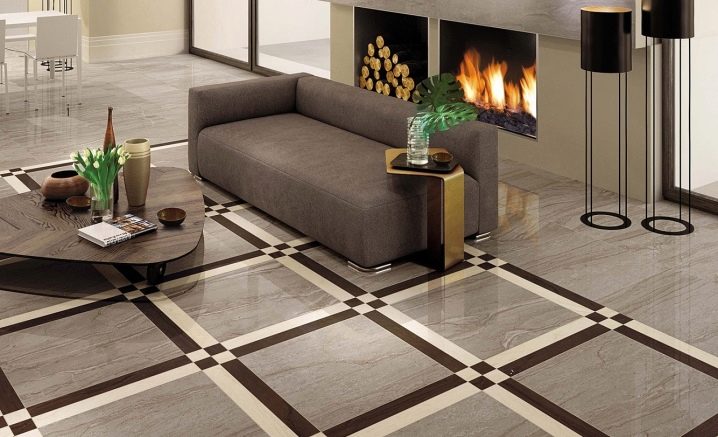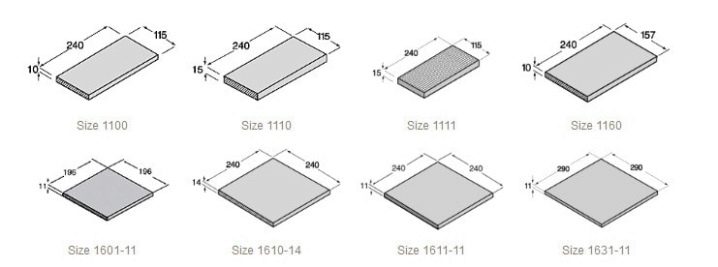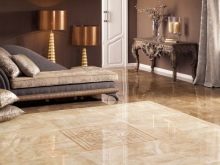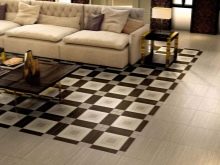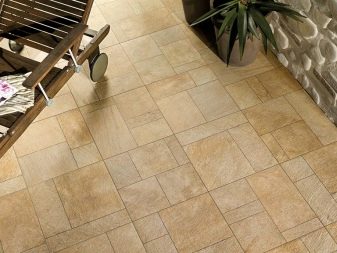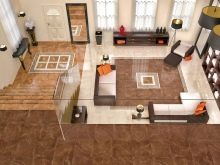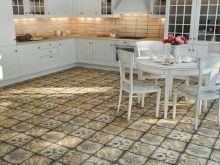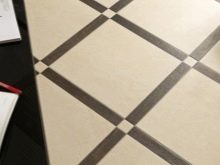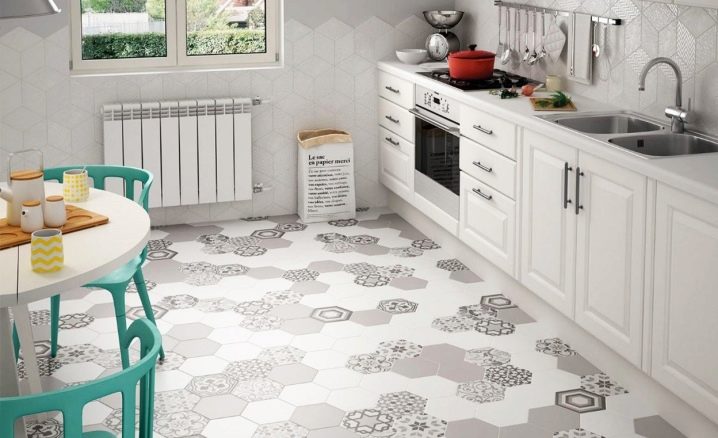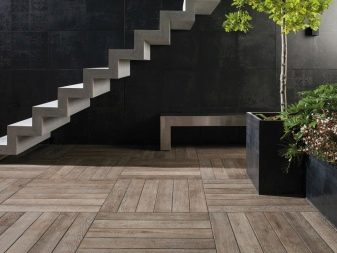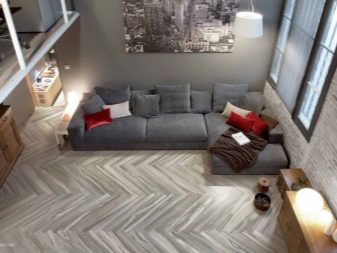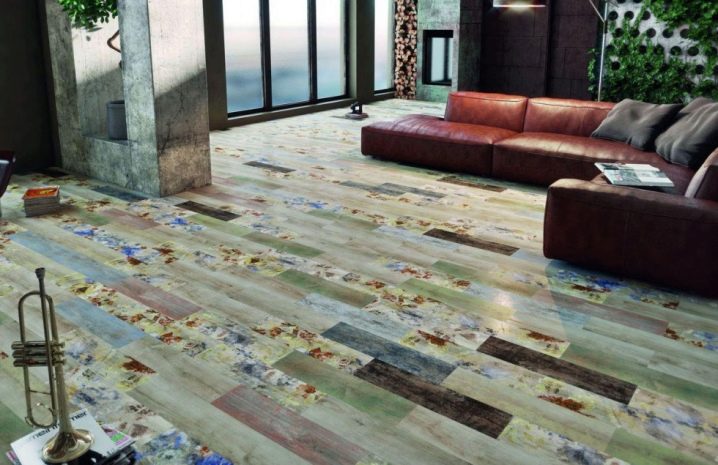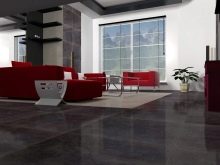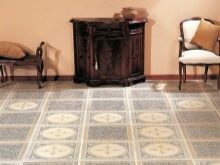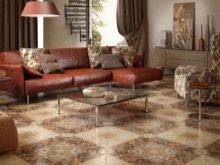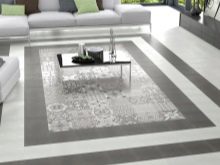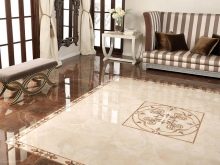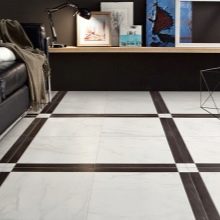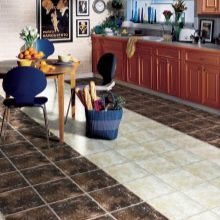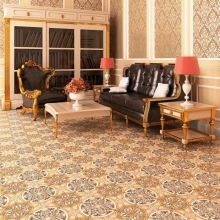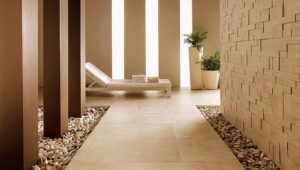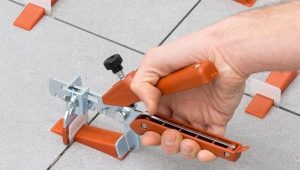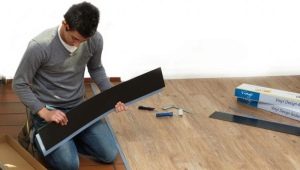Standard sizes of floor tiles
The modern market is filled with various offers of tiles. To make the right choice, you must take into account the characteristics of the room for which the material is purchased, and know what to look for in the first place.
Special features
When purchasing a ceramic tile, buyers often do not pay enough attention to its size. First of all, texture, color, design are considered. However, the dimensions of the tile are very important.
This is due to several factors:
- If the material does not meet the optimal parameters, the coating will not look the best way.
- Size mismatch often leads to a high amount of waste.
- If the option chosen is wrong, the time for installing the tile may increase significantly.
Before starting repair, it is recommended to understand this issue. When choosing it is important to consider a few points:
- The size must be a multiple of 5.This allows you to relate different formats to each other.
- Tile size is also a thickness that varies from 6 to 11 mm.
- It is easier to install thin tiles, it weighs less, it is easier to work with.
- The actual size of the product may slightly deviate from the standard. Such differences are explained by the peculiarities of the material production. The tile is made of various grades of clay, which, when roasting, behave differently.
- Do not panic if the products slightly differ from each other in size. When installing the seams are rubbed with a special compound. "Grout" allows you to make small deviations almost invisible.
- Often, manufacturers indicate the parameters of the tile, taking into account the thickness of the seam. For example, if it is stated that a ceramic product has a size of 33 x 33 cm, then its real parameters may be 32.7 x 32.7 cm.
The width, length and thickness of the product are certainly very important. But it is equally important to comply with the installation technology. There should be no voids between the facing material and the base of the floor.
If everything is done correctly, then the ceramic product can withstand a load of up to two hundred kilograms per square centimeter.
Product Differentiation
Modern ceramic coatings are divided into two main classes:
- tile;
- porcelain stoneware.
The second type of coating is more suitable for rooms with high traffic, where, consequently, there are more significant mechanical loads. These include shopping centers, hospitals, catering places, train stations.
However, in recent years, porcelain tile overtakes tile in popularity. This contributes to lowering the price of the material. Today, they are increasingly veneered floors and plinths in private homes.
The ceramic granite makes it possible to create tiles of non-standard sizes:
- 120x80 cm;
- 100x200 cm;
- 150x320 cm
Products of this format look great in large rooms and allow you to create unique interiors.
How to choose
Before starting installation work, you should decide:
- ceramic products of what format do you need;
- what floor area they will be located on.
For example, if the width of the bathroom does not exceed one meter, then it is better to purchase a tile of 30 x 30 cm in size. In addition, you will need one strip of 10 cm, which will have to be cut off from a single piece. There are no perfect tiles.It should be noted that there is always a small error in size.. Eminent manufacturers produce products that best meet the declared parameters, but even they have acceptable size variations.
This is reported in the instruction sheet that accompanies each batch of goods.
Advantages of tiles of different sizes
Ceramic tiles measuring 5 x 5 cm are in high demand. Often, colorful compositions or patterns are created from facing products of this format. However, installing a 5 x 5 cm tile requires a lot of labor, therefore, the work of the master is more expensive.
The most popular standard format is 20 x 20 cm.. This size is considered versatile and very practical.
The use of such a coating allows you to create a holistic space.
The advantages of this type of tile:
- strength;
- durability;
- ease of installation;
- resistance to mechanical stress.
The format of 30x30 cm is also welcomed by many consumers. This size makes it possible to build the correct lines. If the material is made in bright colors, then the effect of space expansion can be observed.. The ceramic coating of size 30x30 cm looks great, and it is also very easy to mount it, unlike the small-format products mentioned above.
Material size 60 x 60 cm is classified as non-standardHowever, when facing the floor in large rooms, it is very appropriate. Externally, the material of such dimensions looks attractive, especially if it has a rectified edge. After completion of the work, such a floor is a solid canvas, the seams are visually missing, the interior looks solid and unusual.
Ceramics often have deviations in size. It is important that the errors do not exceed the permissible limits.. This postulate is especially important when working with large format ceramic material.
If facing is carried out by a tile of 600 x 600 mm in size, then any defects will be noticeable with the naked eye.
Therefore, before installation, it is important to check each specimen for chipping, as well as to make sure that the sizes match.
Sizes of tiles "under the tree"
Wood remains the most popular and functional material even in the twenty-first century.The material imitating a wooden covering looks solid and aesthetically pleasing.
Formats of such tiles, which are in demand:
- 5x5;
- 30x60;
- 12x45;
- 10x10;
- 30x120;
- 15x45;
- 15x15;
- 40x60;
- 15x60;
- 45x90;
- 15x90;
- 50x100
Non-standard models with a width of 10 cm and a length of up to one and a half meters are also on sale. You can find a veneer on the market that will perfectly simulate a parquet or an array, while the color gamut will be transferred to 100%.
Tiling "under the tree" will decorate almost any room, starting from the business center, ending with an apartment. For example, the Ekovud ceramic material looks very representative.
If the shape of the tile "under the tree" is too elongated, then the risk of its damage increases, so this material should be purchased only from reputable manufacturers.
Sizes of multiformat tiles
Multiformat kits are suitable for creating original compositions. They are sets of various facing fragments:
- flowers;
- curbs;
- framework.
Such material is universal, it can be cladding both walls and floor. Today, many manufacturers produce ceramic coatings that can bring to life the most unexpected and magnificent design solutions.
In the production of multi-format tiles, there is a basic principle of adherence to the multiplicity of sizes, which greatly facilitates the work. When selling material in the kit, as a rule, there are tiles of small sizes.
Standard options:
- 15x15;
- 30x30;
- 45x45
This allows virtually no tile cutting, which reduces the amount of waste and labor costs. In Russia, non-standard ceramic products are not used as often as in Europe. This fact can explain the lower popularity of multiformat cladding in our country. Besides, when installing multiformat products, it is important to correctly mark up and maintain the constant width of the seam.
To properly “put” such material, a professional approach of a person with experience of similar work is necessary.
Tile thickness
Oversized tiles, by definition, should be thicker. When choosing a material it is recommended to consider this factor. The greater the permeability observed in the room, the thicker the material should be.
As a rule, ordinary tiles are differentiated in thickness from 6 to 12 mm, ceramic products made of porcelain stoneware can reach 35 mm, the variants “under the tree” have a thickness not exceeding 10 mm.
Useful tips
- The thickness of the tile in the bathroom and the bathroom may be small, in these rooms there is usually no strong pressure on the material.
- The hallway is the room that is experiencing the greatest mechanical loads, the thickness of the square tile here should be above the average.
- Choosing a tile for the floor, it is recommended to purchase a batch with a margin (at least 10-12% is required for trimming). In addition, even in eminent manufacturers there are sometimes substandard products. This factor is also recommended to take into account.
- Material of a small format on the floor visually reduces the floor space. Another drawback of this type of tile is a large number of joints, which does not contribute to the strength of the lining, especially in rooms with high humidity. If we talk about spacious kitchens (more than 16 square meters), then facing with small tiles will make such a room more comfortable.
- For rooms of irregularly shaped tiles of large sizes are not recommended, otherwise you will receive a large amount of waste.
- Rectangular tiles today are no less in demand than traditional square ones. Most popular formats: 10x25 cm; 15x35 cm; 20x40 cmSuch parameters make it possible to experiment, creating unusual compositions.
You will learn more about the floor tile in the following video.
